[Editor’s Note: Mad Scientist Laboratory welcomes back returning blogger Kate Kilgore with today’s post addressing a key, but heretofore neglected (at least within these pages!) instrument of our pacing threat’s power and influence. This post complements our previous content addressing China’s capabilities spanning the Operational Environment (find links to these resources at the bottom of this post). China’s emergence as the United States’ foremost competitor and adversary has been underpinned by its economic ascendency. Read on to learn how demographic stressors, pressure from COVID-19 lockdowns, and China’s shift from a manufacturing to service economy may ultimately slow its economic growth, impacting the People’s Liberation Army’s efforts to recruit, modernize, and produce equipment!]
China’s Economic Rise Likely to Continue Through 2040, but Demographic Stress and Political Realities Could Slow Growth
China is predicted to complete its transition to a high-income country with an average Gross National Income of over $13,205 by 2023 – a feat accomplished by only Taiwan and South Korea since World War II – and its  Gross Domestic Product will likely overtake the U.S. economy by 2030.1 Factors like restrictive COVID-19 lockdowns, an aging population, and the transition from a manufacturing to service economy are forecasted to slow China’s annual GDP growth to around 2 percent by 2040.2 China’s centralized command economy enables the Chinese Communist Party to implement broad economic policies – like the “Made in China 2025” plan which hopes to achieve a dominant position in global high-tech markets by 2049 and keep the most valuable manufacturing domestic,3 and the 2021 Common Prosperity Program which aims to “regulate excessively high incomes” and “encourage high-income groups and enterprises to return more to society”4 – to try and offset this slowdown.
Gross Domestic Product will likely overtake the U.S. economy by 2030.1 Factors like restrictive COVID-19 lockdowns, an aging population, and the transition from a manufacturing to service economy are forecasted to slow China’s annual GDP growth to around 2 percent by 2040.2 China’s centralized command economy enables the Chinese Communist Party to implement broad economic policies – like the “Made in China 2025” plan which hopes to achieve a dominant position in global high-tech markets by 2049 and keep the most valuable manufacturing domestic,3 and the 2021 Common Prosperity Program which aims to “regulate excessively high incomes” and “encourage high-income groups and enterprises to return more to society”4 – to try and offset this slowdown.
-
-
- In 2015, China’s service sector began to contribute over half of its total GDP. This transition to a service economy means it will operate primarily on a domestic cycle of supply and demand instead of manufacturing and export.5 While the service industry will most likely
 grow,6 the “Made in China 2025” plan – which will shift manufacturing inland, subsidize domestic production, and favor indigenous innovation7 – prioritizes high-value manufacturing to maintain GDP growth rates. To increase demand and consumption of Chinese products – and strengthen its manufacturing base8 – the Common Prosperity Project mandates fiscal transfers from the super wealthy to middle and lower income workers.9 However, this policy is unlikely to bolster Chinese workers’ relatively small share of its GDP, and will most likely only reduce wealth accumulation and influence among the ultra-rich.10
grow,6 the “Made in China 2025” plan – which will shift manufacturing inland, subsidize domestic production, and favor indigenous innovation7 – prioritizes high-value manufacturing to maintain GDP growth rates. To increase demand and consumption of Chinese products – and strengthen its manufacturing base8 – the Common Prosperity Project mandates fiscal transfers from the super wealthy to middle and lower income workers.9 However, this policy is unlikely to bolster Chinese workers’ relatively small share of its GDP, and will most likely only reduce wealth accumulation and influence among the ultra-rich.10
-
-
- Recent lockdowns due to China’s restrictive “zero-COVID” policy have, in the short term, reduced domestic consumption and manufacturing.11 While production exceeded expectations after the 2020 lockdowns
 were lifted, the real estate sector – where most private wealth is invested in China – is facing plummeting property values which are sparking social unrest and reducing consumer spending.12 While China’s economy will likely face lasting effects13 – with its predicted 2022 GDP growth shrinking to 3.3 percent – China’s growth over the next two decades will likely still be relatively high and could still rebound close to pre-COVID estimates.
were lifted, the real estate sector – where most private wealth is invested in China – is facing plummeting property values which are sparking social unrest and reducing consumer spending.12 While China’s economy will likely face lasting effects13 – with its predicted 2022 GDP growth shrinking to 3.3 percent – China’s growth over the next two decades will likely still be relatively high and could still rebound close to pre-COVID estimates.
China’s working age population (16-59 year olds) dropped from 70 percent of the total population in 2010 to 63 percent in 2020,14 and is predicted to fall by more than 130 million between now and 2040.15 China’s fertility rate will likely remain near the 2021 rate of 1.15 children per woman16 – well below the 2.1 children per woman needed to replace annual deaths.17 Restrictive immigration policies and millions of highly educated emigrants pose more challenges to China’s working-age numbers.18 By 2040, China’s over-65 demographic is expected to nearly double, while its working-age population will likely shrink to 860 million – and drop close to 1 percent each year after.19
-
-
- China replaced its previous one-child policy with a three-child policy in 2016, hoping to reverse its population decline. However, birth rates have
 not risen and are not expected to rebound.20 In the unlikely event that China’s fertility rates increase, female labor participation would likely decrease between now and 2040, and any increase in working-age population would not be seen until after 2040.21
not risen and are not expected to rebound.20 In the unlikely event that China’s fertility rates increase, female labor participation would likely decrease between now and 2040, and any increase in working-age population would not be seen until after 2040.21
-
-
- Assuming China’s population reaches the predicted 1.4 billion in 2040,22 its dependency ratio – the sum of those under age 15 and the elderly over age 65, relative to the working-age population – will be around 61.3 percent.23 The cost of supporting social spending for an aging population would fall on less than two-thirds of China’s total population at most – potentially reducing future consumer spending and investments.24
While it already has the world’s second largest middle class of workers earning close to or above the country’s median income by number, over 70% of the Chinese population25 – one quarter of the world’s projected total population –  will likely be middle class by 2030. About 480 million Chinese consumers – more than the total population of the United States – are expected to reach upper-middle and high-income status by 2030.26 While the Common Prosperity policy may slow the growth of China’s highest earners, it does not attempt to shrink the middle class, meaning Chinese consumers will more than likely exercise significant influence over global commerce and market trends.
will likely be middle class by 2030. About 480 million Chinese consumers – more than the total population of the United States – are expected to reach upper-middle and high-income status by 2030.26 While the Common Prosperity policy may slow the growth of China’s highest earners, it does not attempt to shrink the middle class, meaning Chinese consumers will more than likely exercise significant influence over global commerce and market trends.
-
-
- As per-capita buying power increases, China’s labor costs are rising – and have already driven many Chinese manufacturers to countries with cheaper labor.27 China is pursuing ways to replace human workers
 with Artificial Intelligence in sectors like technology, agriculture, and pharmaceuticals by 2025, which could present a solution for rising wages and an aging population – and help China keep many of its most valuable manufacturing firms domestic. 28
with Artificial Intelligence in sectors like technology, agriculture, and pharmaceuticals by 2025, which could present a solution for rising wages and an aging population – and help China keep many of its most valuable manufacturing firms domestic. 28
-
-
- During the 2020 COVID-19 lockdowns, China ranked first in in the world for middle-class expenditures and accounted for nearly 40 percent of global e-commerce transactions. 29 Middle-class consumers in China are more frequently moving to more affordable second and third tier cities, and while the Chinese real estate sector is facing increasing pressure from plummeting values and mortgage boycotts,30 Chinese consumers are still likely to exert significant and growing influence on global consumption trends through 2040. 31
Implications: Between now and 2040, demographic stressors, pressure from COVID-19 lockdowns, and the shift from a manufacturing to a service economy signal that China is more than likely to face reduced annual GDP 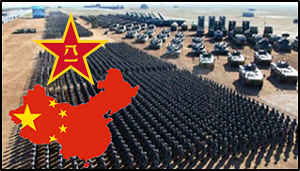 growth numbers and slowed economic growth. These stressors will likely affect the People’s Liberation Army – especially in its efforts to recruit, modernize, and produce equipment. However, efforts to increase foreign influence through investment and acquisitions while maintaining a heavy focus on increasing domestic productivity in high-value sectors mean that China will most likely remain a major regional and global economic influencer through 2040.
growth numbers and slowed economic growth. These stressors will likely affect the People’s Liberation Army – especially in its efforts to recruit, modernize, and produce equipment. However, efforts to increase foreign influence through investment and acquisitions while maintaining a heavy focus on increasing domestic productivity in high-value sectors mean that China will most likely remain a major regional and global economic influencer through 2040.
-
-
- Because China’s 2022 defense spending was announced at 7.1 percent of its GDP – far exceeding any expected growth figures – slower economic growth may not signal a significantly reduction to the PLA’s budget in the future.32 China more than likely recognizes that the trade-off for a more sustainable model based on a service economy means lower overall productivity numbers.
-
-
- Though its increasing elderly population presents clear challenges to China’s working-age demographic, successful integration of AI into
 the manufacturing sector in the future may soften the impact of increased social spending. Faced with these same demographic stressors, the PLA will likely continue efforts to leverage AI to reduce manning requirements and transition from informationized warfare to intelligentized warfare.33
the manufacturing sector in the future may soften the impact of increased social spending. Faced with these same demographic stressors, the PLA will likely continue efforts to leverage AI to reduce manning requirements and transition from informationized warfare to intelligentized warfare.33
-
-
- China will still likely lead the global digital economy by 2030, its middle class will remain influential consumers, and its efforts to retain domestic high-value manufacturing could slow the overall reduction in its forecasted GDP. Not only would this benefit the PLA’s modernization and equipping efforts, but China may leverage domestically manufactured arms34 and technology infrastructure35 exports to further project power and influence both regionally and globally.
If you enjoyed this post, check out the following related TRADOC G-2 and Mad Scientist content addressing our pacing threat:
China Landing Zone content on the TRADOC G-2‘s Operational Environment Enterprise public facing page — including the BiteSize China weekly topics, ATP 7-100.3, Chinese Tactics, People’s Liberation Army Ground Forces Quick Reference Guide, and more!
The Operational Environment (2021-2030): Great Power Competition, Crisis, and Conflict, along with its source document
China Issues New Plan to Address Aging Population
The Inexorable Role of Demographics, by proclaimed Mad Scientist Caroline Duckworth
How China Fights and associated podcast
China: Building Regional Hegemony and China 2049: The Flight of a Particle Board Dragon, the comprehensive report from which this post was excerpted
The Most Consequential Adversaries and associated podcast, with General Charles A. Flynn
China’s PLA Modernization through the DOTMLPF-P Lens, by Dr. Jacob Barton
“Intelligentization” and a Chinese Vision of Future War
Competition and Conflict in the Next Decade
Disrupting the “Chinese Dream” – Eight Insights on how to win the Competition with China
Competition in 2035: Anticipating Chinese Exploitation of Operational Environments
The PLA and UAVs – Automating the Battlefield and Enhancing Training
A Chinese Perspective on Future Urban Unmanned Operations
China: “New Concepts” in Unmanned Combat and Cyber and Electronic Warfare
The PLA: Close Combat in the Information Age and the “Blade of Victory”
China and Russia: Achieving Decision Dominance and Information Advantage, by Ian Sullivan
REMINDER: Join Army Mad Scientist and the National Museum of the United States Army (NMUSA) for the Back to the Future: Using History to Forecast conference on 08-09 November 2022, at Fort Belvoir, Virginia. This event will feature world-renowned expert speakers and panelists from industry, tech, academia, and the U.S. military and other government agencies discussing how history and experience inform and shape our future thinking and decision-making on critical issues. These historians, futurists, and thought leaders will converge backcasting with futurecasting to provide 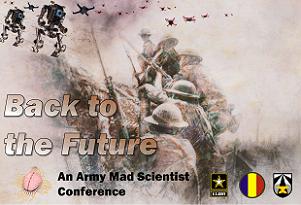 penetrating insights on Army people, materiel, readiness, and doctrine and concepts initiatives. Stay tuned to the Mad Scientist Laboratory for more information on our first in-person conference since 2019!
penetrating insights on Army people, materiel, readiness, and doctrine and concepts initiatives. Stay tuned to the Mad Scientist Laboratory for more information on our first in-person conference since 2019!
About the Author: Kate Kilgore is a TRADOC G-2 Intern and recent graduate of Indiana University, where she studied Law and Public Policy, Comparative International Politics, Soviet History, and Russian and Eastern European Studies. Kate has been greatly influenced by her father’s Army career, and she grew up all over the United States and in Germany, which influenced her passion for Eastern European history. Much of her undergraduate research focused on analyzing the path dependence and modern social implications of Soviet laws and in the former Eastern Bloc, with a focus on Hungary. When she’s not reading about culture and politics of the former Warsaw Pact States, she enjoys baking and antiquing.
Disclaimer: The views expressed in this blog post do not necessarily reflect those of the U.S. Department of Defense, Department of the Army, Army Futures Command (AFC), or Training and Doctrine Command (TRADOC).
1 Ilbo – China’s Economy Could Overtake Overtake U.S. Economy by 2030. The Centre for Economics and Business Research: https://cebr.com/reports/chosun-ilbo-chinas-economy-could-overtake-u-s-economy-by-2030/
2 Revising down the rise of China. Roland Rajah, Alyssa Leng. The Lowy Institute: https://www.lowyinstitute.org/publications/revising-down-rise-china
3 Is ‘Made in China 2025’ a Threat to Global Trade? James McBride. Council on Foreign Relations: https://www.cfr.org/backgrounder/made-china-2025-threat-global-trade#chapter-title-0-1
4 Chinese President Vows to “Adjust Excessive Incomes” of Super Rich. Phillip Inman. The Guardian: https://www.theguardian.com/world/2021/aug/18/chinese-president-xi-jinping-vows-to-adjust-excessive-incomes-of-super-rich
5 Dual Circulation and China’s New Hedged Integration Strategy. Jude Blanchette and Andrew Polk. Center for Strategic and International Studies: https://www.csis.org/analysis/dual-circulation-and-chinas-new-hedged-integration-strategy
6 China’s GDP Examined: A Service-Sector Surge. Prableen Bajpai. Investopedia: https://www.investopedia.com/articles/investing/103114/chinas-gdp-examined-servicesector-surge.asp
7 New China Guidelines Promote Transfer of Manufacturing to Inland Regions. Alexander Chipman Koty. China Briefing: https://www.china-briefing.com/news/new-china-guidelines-promote-transfer-of-manufacturing-to-inland-regions/
8 Will China’s Common Prosperity Upgrade Dual Circulation? Michael Pettis. The Carnegie Endowment: https://www.carnegieendowment.org/chinafinancialmarkets/85571
9 The Only Five Paths China’s Economy Can Follow. Michael Pettis. The Carnegie Endowment: https://www.carnegieendowment.org/chinafinancialmarket/87007
10 China’s Common Prosperity Program: Causes, Challenges, and Implications. Asia Society Policy Institute: https://asiasociety.org/policy-institute/chinas-common-prosperity-program-causes-challenges-and-implications
11 As China Buckles Under “Zero Covid,” Xi Bets Big on Bloat. Ben Steil and Benjamin Della Rocca. Council on Foreign Relations: https://www.cfr.org/blog/china-buckles-under-zero-covid-xi-bets-big-bloat
12 Avoiding the Pain of China’s Housing Crisis Risks Infecting Wider Economy. William R. Rhodes and Stuart P.M. Mackintosh. South China Morning Post: https://amp.scmp.com/comment/opinion/article/3189015/avoiding-pain-chinas-housing-crisis-risks-infecting-wider-economy
13 China Is Still the World’s Factory – And It’s Designing the Future with AI. Kai-Fu Lee. Time: https://time.com/6084158/china-ai-factory-future/
14 China’s Population on Track to Peak Before 2025 as Births Drop. James Mayger, Lin Zhu, Tom Hancock, Yuko Takeo, Sam Kim, Yinan Zhao, Yujing Liu, and Jing Li. Bloomberg News: https://www.bloomberg.com/news/articles/2021-05-11/china-s-population-continues-to-grow-even-as-births-plummet#xj4y7vzkg
15 China’s Demographics and Growth Potential in an Age of Machine Knowledge Capital. Dan Ciuriak. Asia Pacific Foundation of Canada: https://www.asiapacific.ca/publication/chinas-demographics-and-growth-potential-age-machine
16 China Population to Shrink for 1st Time in 60 Years. Xiujian Peng. Business Standard: https://www.business-standard.com/article/international/china-population-to-shrink-for-1st-time-in-60-yrs-what-it-means-for-world-122053000429_1.html
17 Why did Beijing Opt for a Three-Child Policy When it Could Scrap Birth Caps Altogether? Cissy Zhou. China Macro Economy: https://www.scmp.com/economy/china-economy/article/3136061/china-population-why-did-beijing-opt-three-child-policy-when?module=inline&pgtype=article
18 The U.S. Is Still Beating China in Human Capital – For Now. Ryan Hass. Foreign Policy: https://foreignpolicy.com/2021/11/04/china-human-capital-stem-graduates-competition/
19 China Isn’t That Strategic. Michael Schuman. The Atlantic: https://www.theatlantic.com/international/archive/2021/07/china-communists-demographics/619312/
20 China’s Population Crisis: The Country Might Grow Old Before it Grows Rich. Mengni Chen and Paul Yip. China Macro Economy: https://www.scmp.com/comment/opinion/article/3124139/chinas-population-crisis-country-might-grow-old-it-grows-rich
21 China’s Demographics and Growth Potential in an Age of Machine Knowledge Capital. Dan Ciuriak. Asia Pacific Foundation of Canada: https://www.asiapacific.ca/publication/chinas-demographics-and-growth-potential-age-machine
22 The China Challenge: A Demographic Predicament Will Plague the Mainland for Decades. Nicholas Eberstadt. Discourse: https://www.discoursemagazine.com/culture-and-society/2021/06/09/the-china-challenge-a-demographic-predicament-will-plague-the-mainland-for-decades/
23 China’s Demographics and Growth Potential in an Age of Machine Knowledge Capital. Dan Ciuriak. Asia Pacific Foundation of Canada: https://www.asiapacific.ca/publication/chinas-demographics-and-growth-potential-age-machine
24 Can China’s Communist Party Defuse its Demographic Time Bomb? Dexter Tiff Roberts. The Atlantic Council: https://www.atlanticcouncil.org/blogs/new-atlanticist/can-chinas-communist-party-defuse-its-demographic-time-bomb/
25 Developments and Forecasts of Growing Consumerism. European Commission: https://knowledge4policy.ec.europa.eu/foresight/topic/growing-consumerism/more-developments-relevant-growing-consumerism_en
26 Age of Asia: Rise of a Multipolar World. Jeffrey Ding. Economist Impact Report: https://safe.menlosecurity.com/doc/docview/viewer/docN2DAEB7E205672516cf0551c76cccb0cdf42618b2b6e4e7f9b5073767919a6a63dce77ead2201
27 Subcontract Manufacturing in China: The Rusks and Alternative Options. Doug Donahue. Forbes Business Council: https://www.forbes.com/sites/forbesbusinesscouncil/2021/06/18/subcontract-manufacturing-in-china-the-risks-and-alternative-options/?sh=1bf9cab27de7
28 China Is Still the World’s Factory – And It’s Designing the Future with AI. Kai-Fu Lee. Time: https://time.com/6084158/china-ai-factory-future/
29 The Pandemic Stalls Growth in the Global Middle Class, Pushes Poverty Up Sharply. Rakesh Kochhar. Pew Research Center: https://www.pewresearch.org/global/2021/03/18/the-pandemic-stalls-growth-in-the-global-middle-class-pushes-poverty-up-sharply/
30 Avoiding the Pain of China’s Housing Crisis Risks Infecting Wider Economy. William R. Rhodes and Stuart P.M. Mackintosh. South China Morning Post: https://amp.scmp.com/comment/opinion/article/3189015/avoiding-pain-chinas-housing-crisis-risks-infecting-wider-economy
31 China’s Influence on the Global Middle Class. Homi Kharas and Megan Dooley. Brookings Institute: https://www.brookings.edu/research/chinas-influence-on-the-global-middle-class/
32 China Plans 7.1% Defence Spending Rise This Year, Outpacing GDP Target. Yew Lun Tian. Reuters: https://www.reuters.com/markets/asia/china-defence-spending-rise-outpace-gdp-target-this-year-2022-03-05/
33 China’s Demography and its Implications. Financial Express: https://www.financialexpress.com/defence/chinas-demography-and-its-implications/2243549/
34 China Emerges as an Arms Supplier of Choice for Many Middle East Countries. Paul Iddon. Middle East Eye: https://middleeasteye.net/news/china-emerges-major-exporter-weapons-middle-east-north-africa
35 China’s Digital Silk Road and Africa’s Technological Future. Motolani Agbebi. Council on Foreign Relations: https://www.cfr.org/blog/chinas-digital-silk-road-and-africas-technological-future
 Amy Webb advises Chief eXperience Officers (CXOs) of the world’s most-admired companies, three-star admirals and generals, and the senior leadership of central banks and intergovernmental organizations. Founder of the Future Today Institute, a leading foresight and strategy firm that helps leaders and their organizations prepare for complex futures, Amy pioneered a data-driven, technology-led foresight methodology that is now used within hundreds of organizations. Forbes called Amy “one of the five women changing the world.” She was honored as one of the BBC’s 100 Women of 2020 and is ranked on the Thinkers50 list of the 50 most influential management thinkers globally. Amy is the best-selling author of several books. Her latest book, The Genesis Machine (PublicAffairs / Hachette 2022) examines the futures of gene editing, biotech, and synthetic biology. Synthetic biology is the promising and controversial technology platform that combines biology and artificial intelligence, opening up the potential to program biological systems much as we program computers.
Amy Webb advises Chief eXperience Officers (CXOs) of the world’s most-admired companies, three-star admirals and generals, and the senior leadership of central banks and intergovernmental organizations. Founder of the Future Today Institute, a leading foresight and strategy firm that helps leaders and their organizations prepare for complex futures, Amy pioneered a data-driven, technology-led foresight methodology that is now used within hundreds of organizations. Forbes called Amy “one of the five women changing the world.” She was honored as one of the BBC’s 100 Women of 2020 and is ranked on the Thinkers50 list of the 50 most influential management thinkers globally. Amy is the best-selling author of several books. Her latest book, The Genesis Machine (PublicAffairs / Hachette 2022) examines the futures of gene editing, biotech, and synthetic biology. Synthetic biology is the promising and controversial technology platform that combines biology and artificial intelligence, opening up the potential to program biological systems much as we program computers.  “write” function to make sweeping changes with more control. This is not limited to human biology as it can be applied to plants, viruses, and any other biological material.
“write” function to make sweeping changes with more control. This is not limited to human biology as it can be applied to plants, viruses, and any other biological material. Policy and regulation do not adequately address the synthetic biology issue in a cohesive way. In some countries, genetic screening for certain types of diseases is employed, but it is generally unfavorable to screen for attributes that correlate to higher intelligence. However, in some countries it is not illegal, and there are commercial entities offering to screen for cognitive ability.
Policy and regulation do not adequately address the synthetic biology issue in a cohesive way. In some countries, genetic screening for certain types of diseases is employed, but it is generally unfavorable to screen for attributes that correlate to higher intelligence. However, in some countries it is not illegal, and there are commercial entities offering to screen for cognitive ability. technology could be used for hyper-real time, high-frequency strategy creation by the Army or, conversely, an adversary.
technology could be used for hyper-real time, high-frequency strategy creation by the Army or, conversely, an adversary.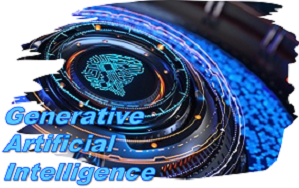 . It could also be used to amplify misinformation and allow a foreign actor to sow distrust in a way that is harder to detect and more effective overall.
. It could also be used to amplify misinformation and allow a foreign actor to sow distrust in a way that is harder to detect and more effective overall.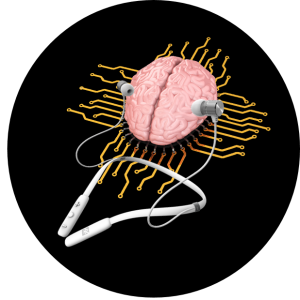
 industry, tech, academia, and the U.S. military and other government agencies discussing how history and experience inform and shape our future thinking and decision-making on critical issues. These historians, futurists, and thought leaders will converge backcasting with futurecasting to provide penetrating insights on Army people, materiel, readiness, and doctrine and concepts initiatives. Stay tuned to the Mad Scientist Laboratory for more information on our first in-person conference since 2019!
industry, tech, academia, and the U.S. military and other government agencies discussing how history and experience inform and shape our future thinking and decision-making on critical issues. These historians, futurists, and thought leaders will converge backcasting with futurecasting to provide penetrating insights on Army people, materiel, readiness, and doctrine and concepts initiatives. Stay tuned to the Mad Scientist Laboratory for more information on our first in-person conference since 2019!


 Gross Domestic Product will likely overtake the U.S. economy by 2030.
Gross Domestic Product will likely overtake the U.S. economy by 2030. grow,
grow, were lifted, the real estate sector – where most private wealth is invested in China – is facing plummeting property values which are sparking social unrest and reducing consumer spending.
were lifted, the real estate sector – where most private wealth is invested in China – is facing plummeting property values which are sparking social unrest and reducing consumer spending. not risen and are not expected to rebound.
not risen and are not expected to rebound. will likely be middle class by 2030. About 480 million Chinese consumers – more than the total population of the United States – are expected to reach upper-middle and high-income status by 2030.
will likely be middle class by 2030. About 480 million Chinese consumers – more than the total population of the United States – are expected to reach upper-middle and high-income status by 2030. with Artificial Intelligence in sectors like technology, agriculture, and pharmaceuticals by 2025, which could present a solution for rising wages and an aging population
with Artificial Intelligence in sectors like technology, agriculture, and pharmaceuticals by 2025, which could present a solution for rising wages and an aging population  growth numbers and slowed economic growth. These stressors will likely affect the People’s Liberation Army – especially in its efforts to recruit, modernize, and produce equipment. However, efforts to increase foreign influence through investment and acquisitions while maintaining a heavy focus on increasing domestic productivity in high-value sectors mean that China will most likely remain a major regional and global economic influencer through 2040.
growth numbers and slowed economic growth. These stressors will likely affect the People’s Liberation Army – especially in its efforts to recruit, modernize, and produce equipment. However, efforts to increase foreign influence through investment and acquisitions while maintaining a heavy focus on increasing domestic productivity in high-value sectors mean that China will most likely remain a major regional and global economic influencer through 2040. the manufacturing sector in the future may soften the impact of increased social spending. Faced with these same demographic stressors, the PLA will likely continue efforts to leverage AI to reduce manning requirements and transition from
the manufacturing sector in the future may soften the impact of increased social spending. Faced with these same demographic stressors, the PLA will likely continue efforts to leverage AI to reduce manning requirements and transition from  penetrating insights on Army people, materiel, readiness, and doctrine and concepts initiatives. Stay tuned to the Mad Scientist Laboratory for more information on our first in-person conference since 2019!
penetrating insights on Army people, materiel, readiness, and doctrine and concepts initiatives. Stay tuned to the Mad Scientist Laboratory for more information on our first in-person conference since 2019!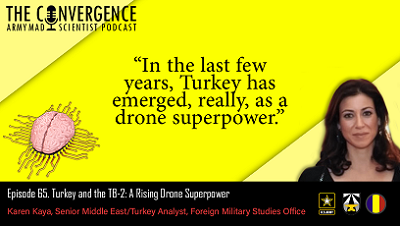
 cializes in Middle Eastern affairs with a particular focus on Turkey for the
cializes in Middle Eastern affairs with a particular focus on Turkey for the
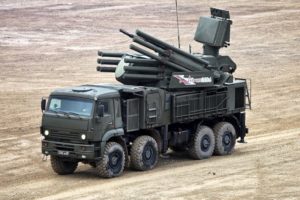
 In the last few years,
In the last few years,  This could precipitate geopolitical competitions and inter-state rivalries transitioning into open conflict, complicating the operational environment.
This could precipitate geopolitical competitions and inter-state rivalries transitioning into open conflict, complicating the operational environment.

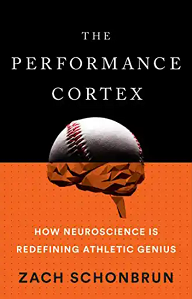 Dutton/Penguin Books in April 2018. Before joining The Week, Zach covered five Final Fours, the Super Bowl, the World Series, the NBA postseason, US Open tennis and championship golf — among numerous other events — for the Times, as well as other business and sports features. Six of his articles have appeared on the front page of The New York Times. Zach received a B.A. in Economics from Syracuse in 2009 and an M.S. in Journalism from Columbia in 2011.
Dutton/Penguin Books in April 2018. Before joining The Week, Zach covered five Final Fours, the Super Bowl, the World Series, the NBA postseason, US Open tennis and championship golf — among numerous other events — for the Times, as well as other business and sports features. Six of his articles have appeared on the front page of The New York Times. Zach received a B.A. in Economics from Syracuse in 2009 and an M.S. in Journalism from Columbia in 2011. oldiers share many characteristics with performance athletes, and researchers have identified ways to chart and measure brain activations when performing athletic tasks. These
oldiers share many characteristics with performance athletes, and researchers have identified ways to chart and measure brain activations when performing athletic tasks. These 

 Batting practice in baseball has little value to the player as the pitches are slower and have less movement than the pitches they will face in a live game — in essence, players are not practicing the skill they will need.
Batting practice in baseball has little value to the player as the pitches are slower and have less movement than the pitches they will face in a live game — in essence, players are not practicing the skill they will need.  The better approach is understanding the constraints of the task and working within those constraints.
The better approach is understanding the constraints of the task and working within those constraints.  paramount, and tactile feedback in a virtual environment where athletes can feel the ball in their hands — or Soldiers feel the recoil of their weapons — may enhance the learning output and resulting data to be analyzed.
paramount, and tactile feedback in a virtual environment where athletes can feel the ball in their hands — or Soldiers feel the recoil of their weapons — may enhance the learning output and resulting data to be analyzed. 
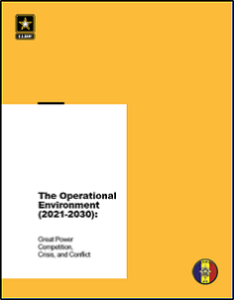 Chemical Warfare (CW) has had something of a resurgence over the past decade, and as we contemplate an
Chemical Warfare (CW) has had something of a resurgence over the past decade, and as we contemplate an  Paradoxically, the use of chemical agents has increased dramatically over the past decade, even though the International Community agreed to ban these weapons under the terms of the 1997
Paradoxically, the use of chemical agents has increased dramatically over the past decade, even though the International Community agreed to ban these weapons under the terms of the 1997  including traditional chemical warfare agents like nerve agents (sarin or VX), blister agents (mustard, lewisite), blood agents (hydrogen cyanide or cyanogen chloride), or choking agents (chlorine, phosgene), to TICs which are released purposefully as weapons (as we have seen in Syria and Iraq) or as a secondary result of a military operation (where a chemical facility is destroyed and an accidental release occurs).
including traditional chemical warfare agents like nerve agents (sarin or VX), blister agents (mustard, lewisite), blood agents (hydrogen cyanide or cyanogen chloride), or choking agents (chlorine, phosgene), to TICs which are released purposefully as weapons (as we have seen in Syria and Iraq) or as a secondary result of a military operation (where a chemical facility is destroyed and an accidental release occurs). European AI/machine learning experts who work in the drug industry recently ran an artificial intelligence (AI) application to see how easy it would be for “bad actors” to use this revolutionary technology to create novel CW agents. A six-hour run of the AI application resulted in 40,000 potentially lethal new substances, many of which were somehow related to VX. Because they are novel, it is unclear whether all, any, or some of these would be covered under the CWC.
European AI/machine learning experts who work in the drug industry recently ran an artificial intelligence (AI) application to see how easy it would be for “bad actors” to use this revolutionary technology to create novel CW agents. A six-hour run of the AI application resulted in 40,000 potentially lethal new substances, many of which were somehow related to VX. Because they are novel, it is unclear whether all, any, or some of these would be covered under the CWC. terrorists and 130 of the hostages dead from lethal doses. This operation demonstrates the potential of fentanyl as a military weapon. These types of agents are not covered under the terms of the CWC.
terrorists and 130 of the hostages dead from lethal doses. This operation demonstrates the potential of fentanyl as a military weapon. These types of agents are not covered under the terms of the CWC. Of all of our potential adversaries,
Of all of our potential adversaries, 